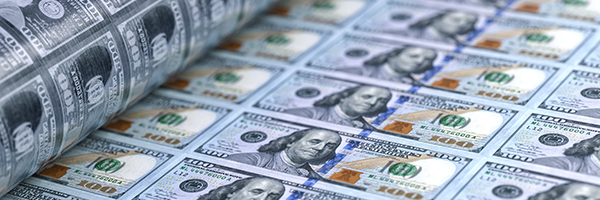If the recession isn’t here already, it’s only because of a technicality.
In the first-quarter U.S. GDP contracted at a 1.6% annualized rate. The Atlanta Federal Reserve’s GDPNow tracker forwards that in the second-quarter GDP will contract at a 2.1% rate. We won’t know if that forecast is correct until the official initial estimate of second-quarter GDP is reported on July 28. The Atlanta Fed forecast might be way off-although the GDPNow tracker has a very good track record and its accuracy, historically, gets better as we get closer to the actual report on the quarter. And while two consecutive quarters of contraction is the rule-of-thumb definition of a recession, some of the economists who call recessions may not give this one their official designation until they see other factors fall into place. Typically, for example, these recession umps like to see more of a slowdown in the job market than we’re seeing now.
But all this is essentially quibbling. For all practical purposes–and for all the market’s purposes–we’re in a recession. (I keep remembering the Wall Street saw: When your neighbor is out of work, it’s a recession. When you’re out of work, it’s a depression.)
What we seeing right now is the stock and bond market pricing in a recession. The process isn’t complete by any means. We don’t know how deep this recession will be or how much demand will be destroyed by the Fed’s higher interest rates, but the process is relatively easy to understand and very apparent right now. Just look at oil prices where a barrel of West Texas Intermediate, the benchmark for U.S. crude, hit $122 a barrel on June 8 and then, on recession fears, plunged to $98.53 on July 6. (The price has rebounded today with a 4.26% gain to $102.73. “Pricing in” anything as big and as uncertain in its dimensions as a recession isn’t a smooth process.)
But the process of “pricing in” a recession that is already upon us or that is just about to hit us, isn’t likely to be the big driver of stock and bond prices over the next few months.
The stock market consensus now–what stocks are pricing in–includes a near-term recession but then it assumes that the Federal Reserve will quickly cave into the pressures of a recession and begin cutting interest rates in early 2023.
If you look out six months or so, you can see bond traders trying to position themselves for those interest rate cuts now. If you believe, the Fed will begin to cut rates in early 2023, then bonds at today’s 3.04% yield on the 2-year Treasury look pretty attractive. (The price of that Treasury will climb if the Federal Reserve cuts interest rates.)
I don’t see the same forward positioning in stocks–yet–although you could argue that the indexes are hanging as tough as they are–the Standard & Poor’s 500 is only at the very edge of a bear market after all–because, in my opinion, we’re still pricing in a recession and some investors are looking for more evidence that the recession will tip the Federal Reserve into interest rate cuts.
And that is the most important question right now. Will the Federal Reserve cave to the pain of a recession and start to cut interest rates again in early 2023?
The Jerome Powell Fed did, in its June minutes, released yesterday, make the case that it would stay the course until it brought inflation back down to something near its 2% target rate. That would require way more interest rate increases than just 75 basis points in July and September, and then 50 basis points in October and December.
But, frankly, the market doesn’t think that this Fed has the stomach for letting a recession run on and on while it battles inflation. The bet is that the Fed will start cutting rates in early 2023. In the last few weeks, a sizeable gap has opened between the Fed’s projection of where interest rates will be at the end of 2023–according to the latest Dot Plot–and where traders in the Fed Funds futures market think they will be. The Dot Pot from the Fed saw a peak of 3.75% in 2023. Traders are pricing in a peak of around 3.3% in the first quarter of 2023.
A peak that early in 2023 would produce a strong rally in stocks and bonds in 2023.
How likely is it?



I see this situation being kicked down the road for the next administration to seriously deal with it. It would take a strong President to appoint someone as tough minded as a Paul Volker to address it.
I’m not a Democrat, but so far I can only see a Joe Manchin as President who can appoint…? Who would you see as chairman of the Fed, who could stand up to the heat in order to get the inflation problem under control?